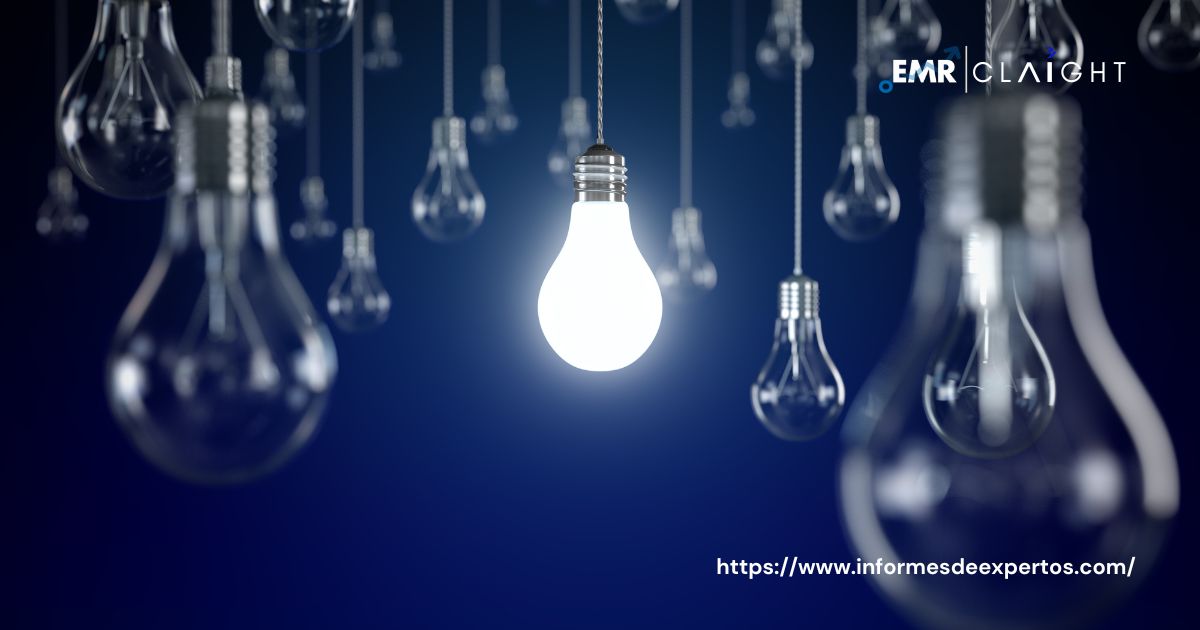The lighting market encompasses the production, distribution, and consumption of various lighting products and solutions designed to illuminate residential, commercial, industrial, and outdoor spaces. From traditional incandescent bulbs to advanced LED systems, the lighting industry undergoes continuous evolution driven by technological innovation, regulatory standards, and shifting consumer preferences.
Overview:
The lighting market serves as a fundamental component of modern society, providing illumination for diverse applications ranging from indoor lighting in homes, offices, and institutions to outdoor lighting for streets, highways, and public spaces. Lighting products vary in form, function, and technology, catering to specific needs and preferences of end-users. Traditional lighting sources such as incandescent, fluorescent, and halogen bulbs have gradually been supplemented or replaced by energy-efficient alternatives, notably light-emitting diodes (LEDs), which offer superior performance, longevity, and energy savings.
Market Dynamics:
The dynamics of the lighting market are influenced by a multitude of factors, including technological advancements, regulatory policies, energy efficiency standards, economic conditions, and societal trends. Understanding these dynamics is essential for stakeholders to navigate the market landscape effectively.
- Technological Advancements: The lighting industry continually embraces technological innovations aimed at enhancing efficiency, durability, and functionality of lighting products. Advancements in LED technology, smart lighting systems, and connected solutions enable greater control, customization, and energy savings, driving adoption across various sectors.
- Regulatory Standards: Government regulations and energy efficiency standards play a significant role in shaping the lighting market. Measures such as energy labeling requirements, phase-outs of inefficient lighting technologies, and incentives for energy-efficient solutions incentivize manufacturers and consumers to embrace sustainable lighting practices.
- Energy Efficiency: With growing awareness of environmental sustainability and energy conservation, there is a heightened emphasis on energy-efficient lighting solutions. LED lighting, in particular, offers substantial energy savings compared to traditional lighting technologies, leading to widespread adoption in both residential and commercial applications.
- Market Competition: The lighting market is characterized by intense competition among manufacturers, driven by factors such as product quality, pricing, brand reputation, and innovation. Established players compete with emerging startups and international conglomerates, fostering a dynamic ecosystem of product offerings and market strategies.
- Consumer Preferences: Changing consumer preferences, influenced by factors such as aesthetics, functionality, and sustainability, drive demand for specific lighting products and designs. Preferences for customizable lighting solutions, smart controls, and human-centric lighting designs shape product development and marketing strategies.
Key Players:
The lighting market comprises a diverse array of players, including multinational corporations, regional manufacturers, and innovative startups. Some of the key players in the global lighting industry include:
- Philips Lighting (Signify): A leading provider of lighting solutions, Signify offers a wide range of LED lighting products for residential, commercial, and urban applications, along with connected lighting systems and services.
- Osram GmbH: Osram is a prominent supplier of lighting solutions, including LEDs, lamps, and luminaires for various indoor and outdoor applications. The company also specializes in automotive lighting and specialty lighting products.
- General Electric (GE) Lighting: GE Lighting manufactures a comprehensive portfolio of lighting products, encompassing LED bulbs, fixtures, and controls for residential, commercial, and industrial use. The company emphasizes energy efficiency, durability, and smart lighting capabilities.
- Acuity Brands: Acuity Brands is a leading provider of lighting and building management solutions, offering a broad range of LED luminaires, controls, and software platforms for commercial, industrial, and institutional customers.
- Eaton Corporation: Eaton is a diversified power management company that manufactures lighting solutions under brands such as Cooper Lighting Solutions. The company offers a wide range of LED luminaires, controls, and emergency lighting systems for various applications.
Future Outlook:
The future of the lighting market is shaped by emerging trends and technological innovations aimed at improving energy efficiency, enhancing functionality, and providing personalized lighting experiences. Key trends influencing the future of the lighting industry include:
- LED Adoption and Innovation: The widespread adoption of LEDs is expected to continue, driven by ongoing advancements in efficiency, color quality, and connectivity. Innovations such as micro-LEDs, OLEDs, and quantum dots offer new possibilities for lighting design and performance.
- Smart Lighting and IoT Integration: The integration of smart lighting systems with IoT (Internet of Things) technology enables advanced control, automation, and connectivity features. Smart lighting solutions offer benefits such as energy optimization, remote monitoring, and personalized lighting experiences.
- Human-Centric Lighting: Human-centric lighting designs aim to enhance well-being and productivity by aligning lighting with natural circadian rhythms and user preferences. Tunable white LEDs, circadian lighting systems, and biodynamic lighting solutions cater to evolving demands for health-conscious lighting environments.
- Sustainability and Circular Economy: The lighting industry is increasingly focused on sustainability, with efforts to reduce energy consumption, minimize waste, and adopt eco-friendly materials. Circular economy initiatives promote product reuse, recycling, and remanufacturing to minimize environmental impact throughout the product lifecycle.
- Urban Lighting and Smart Cities: The deployment of lighting solutions in urban environments is integral to smart city initiatives aimed at enhancing safety, security, and livability. Intelligent street lighting, adaptive lighting controls, and integrated sensor networks contribute to efficient urban infrastructure management.


